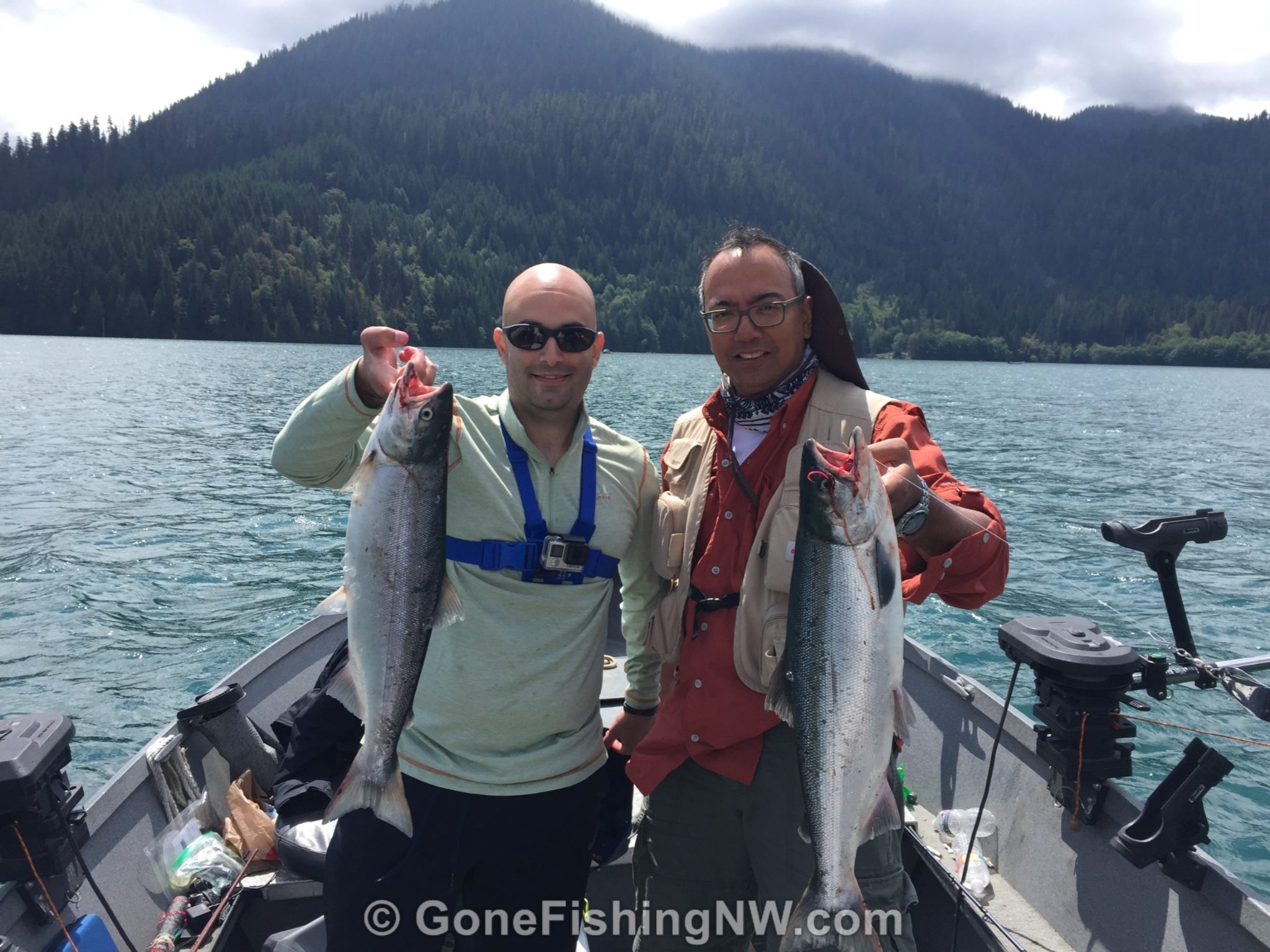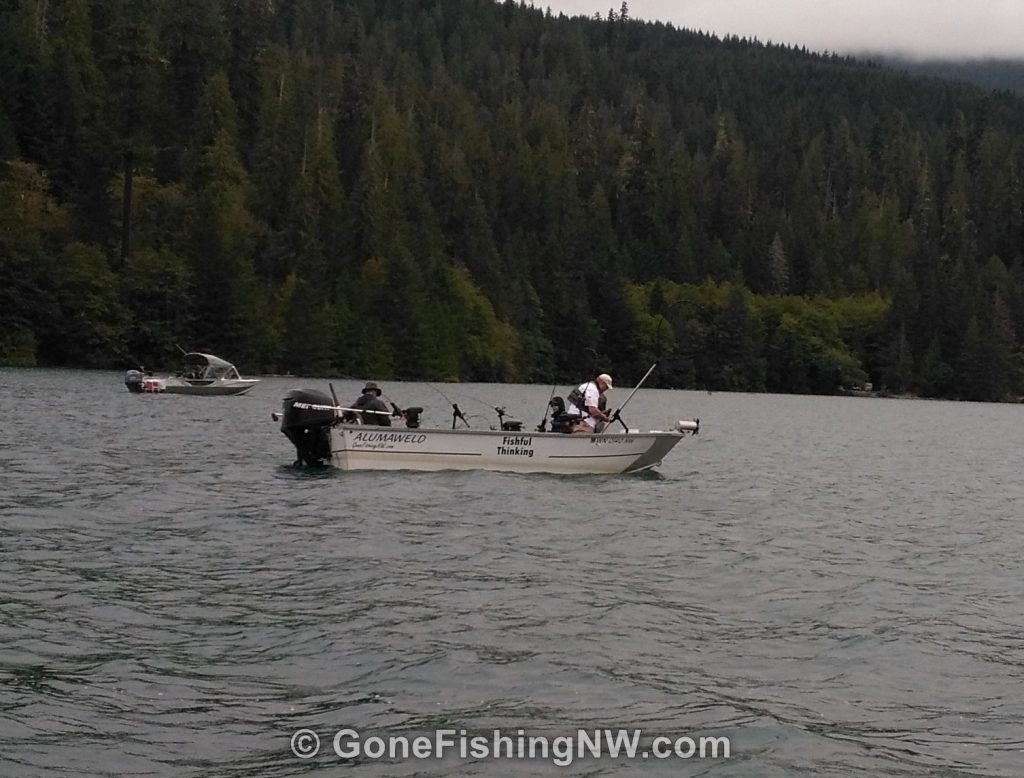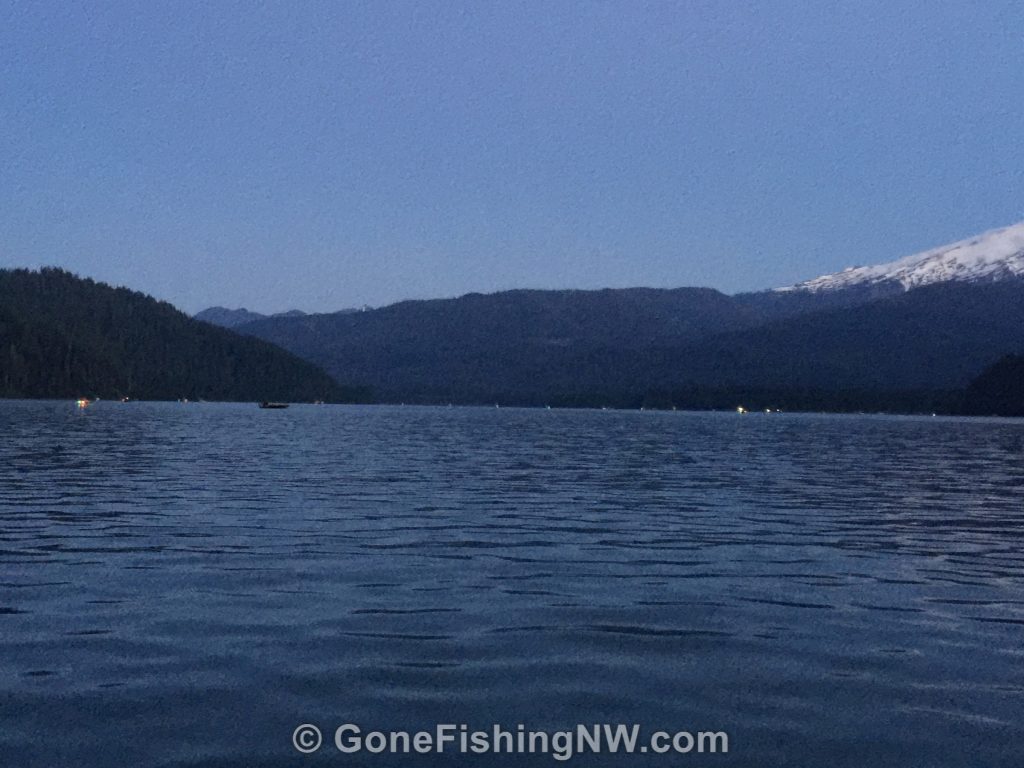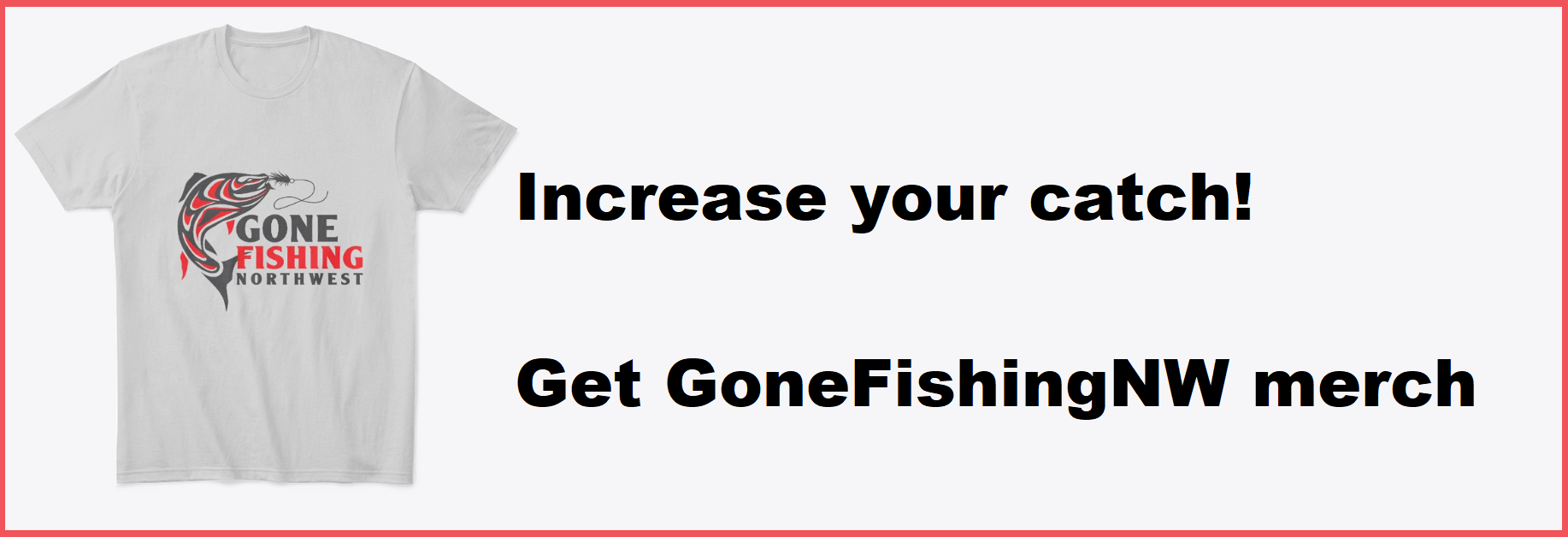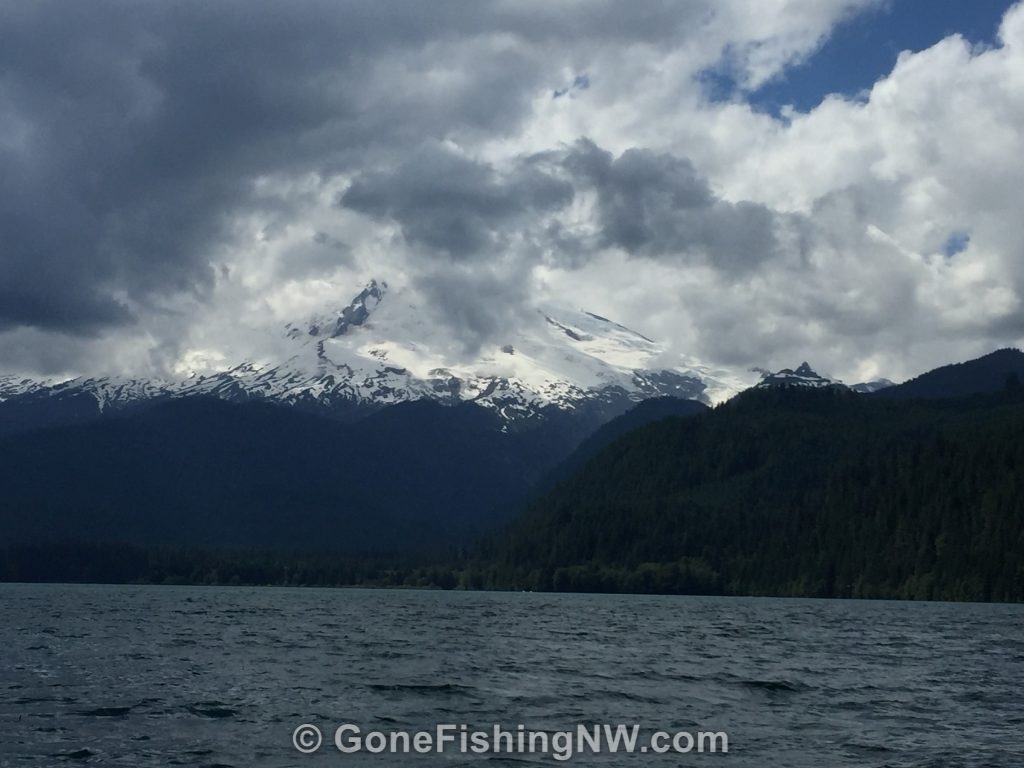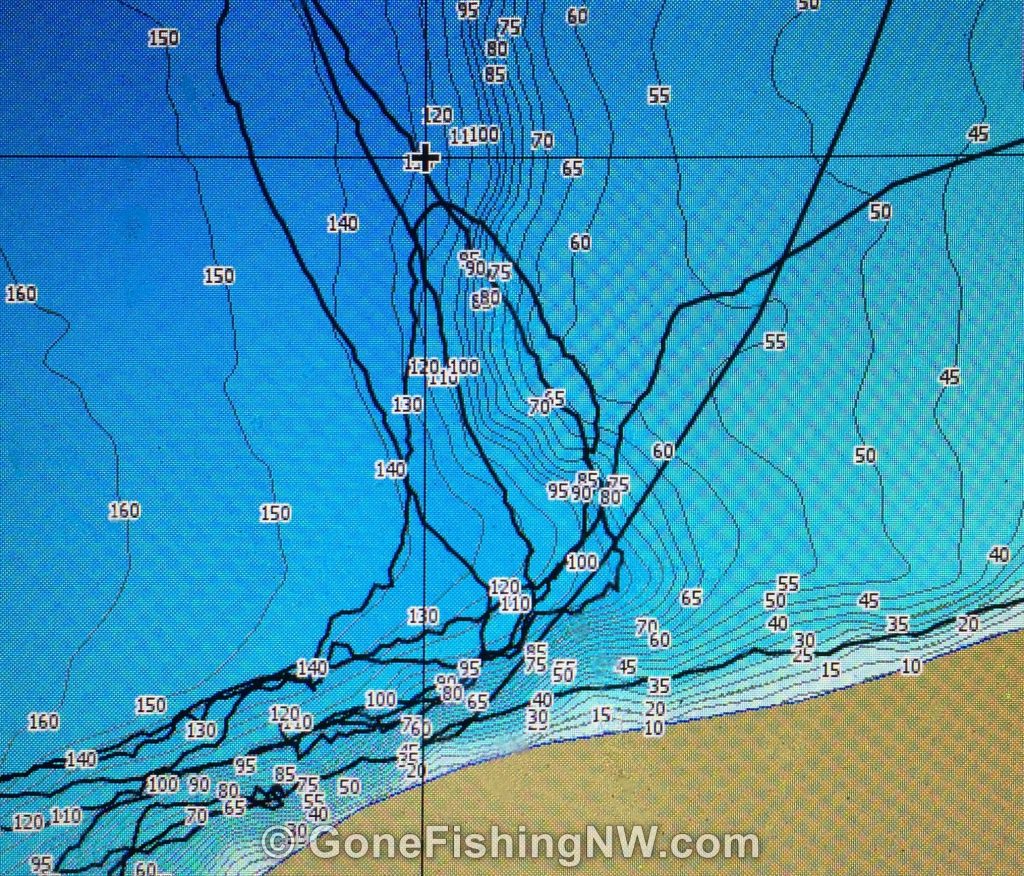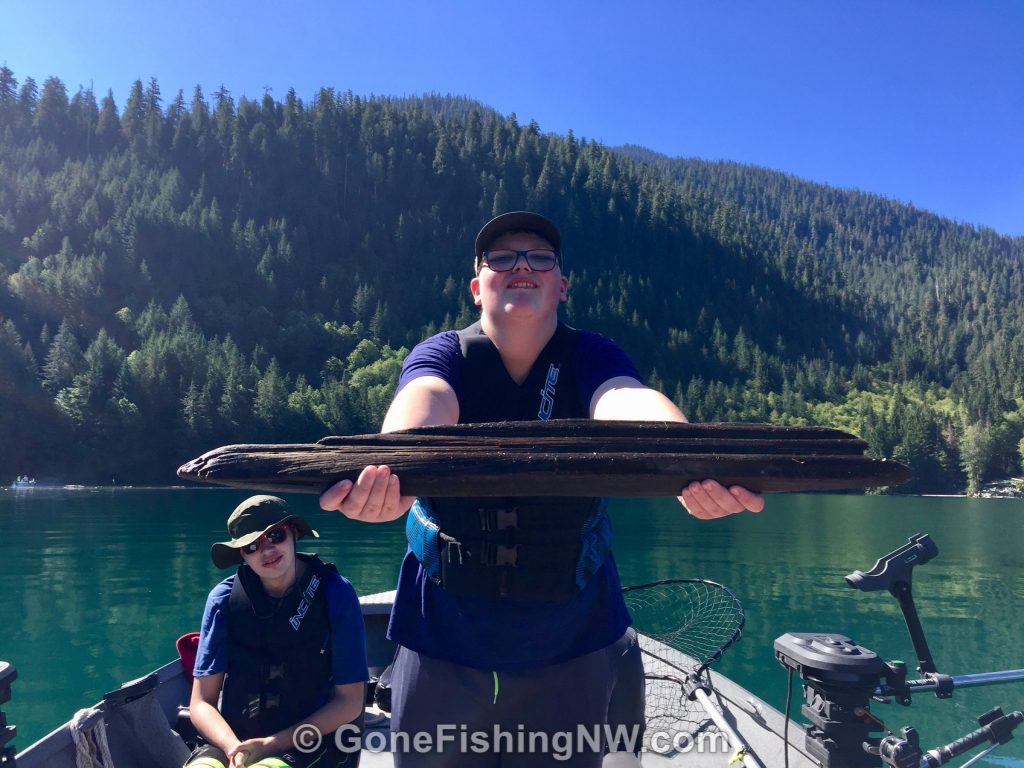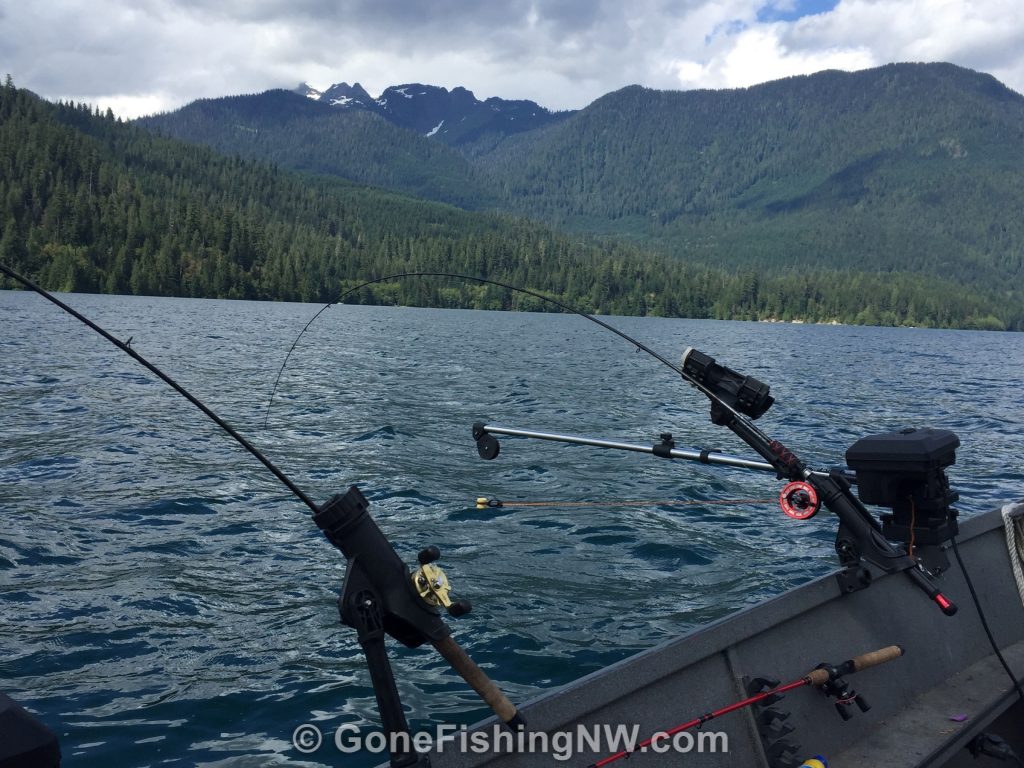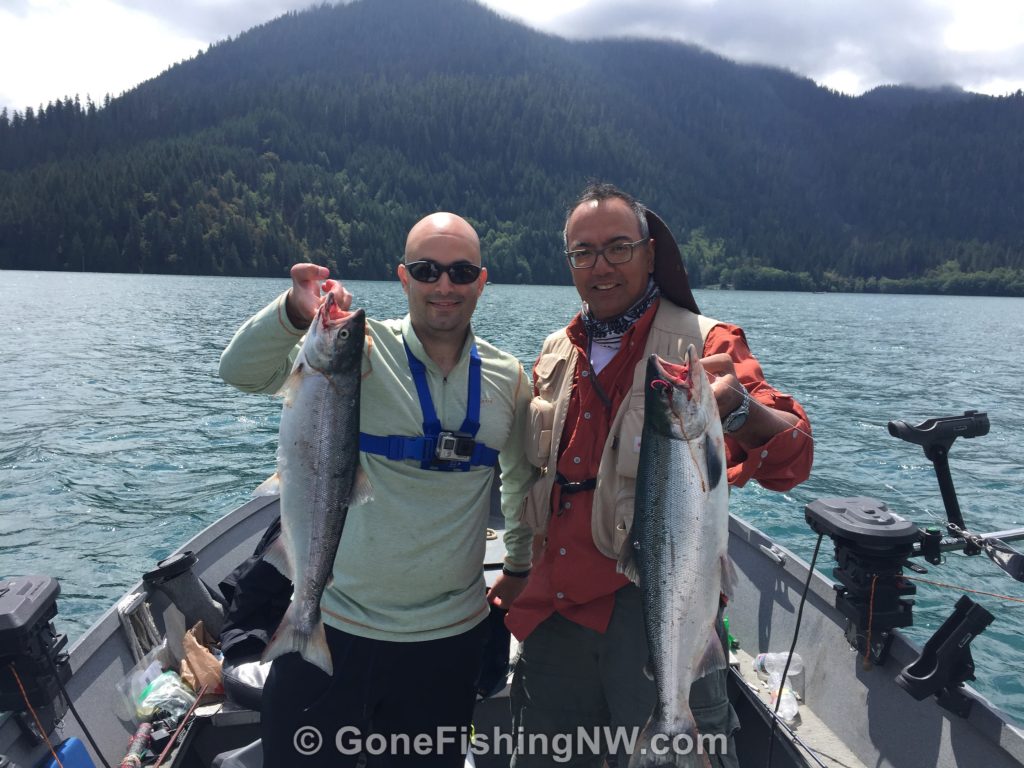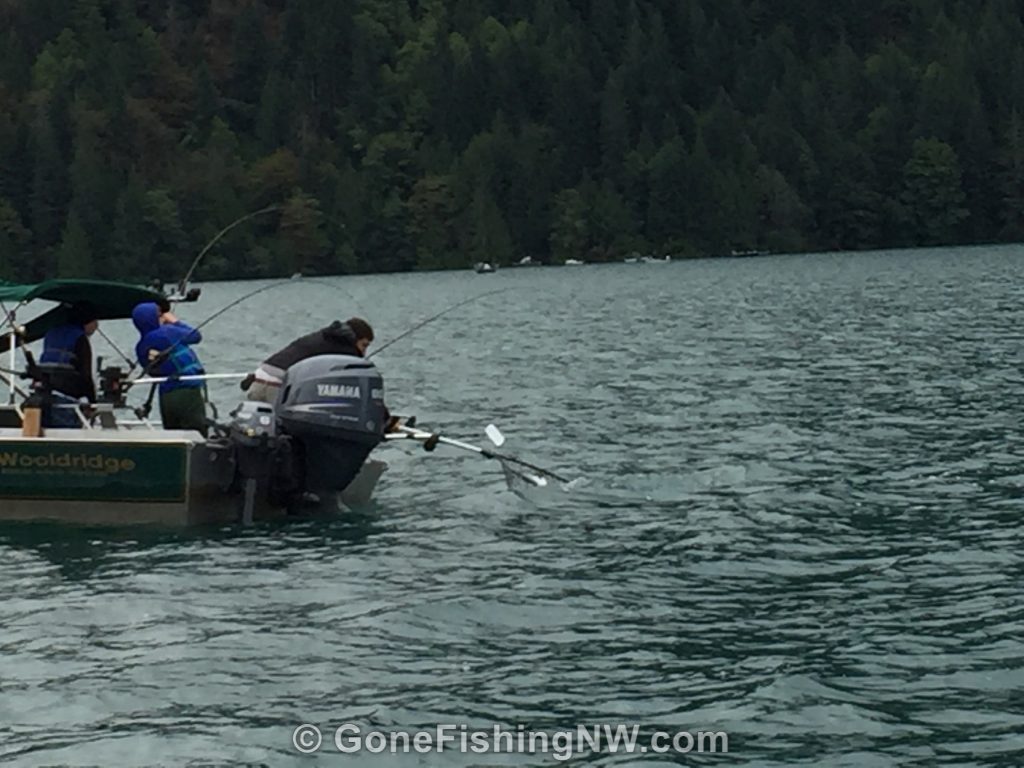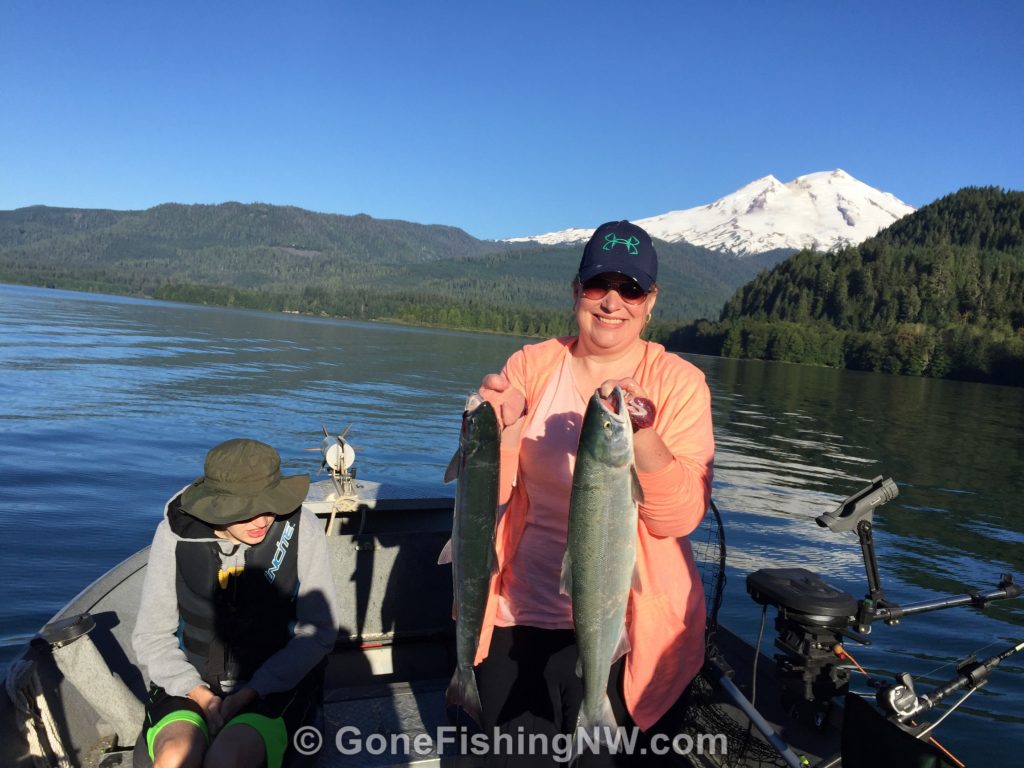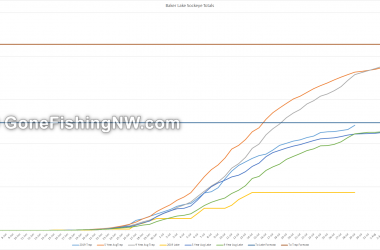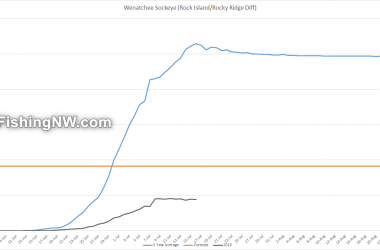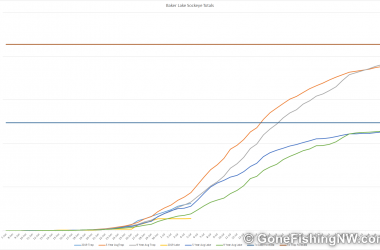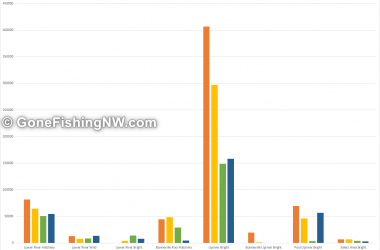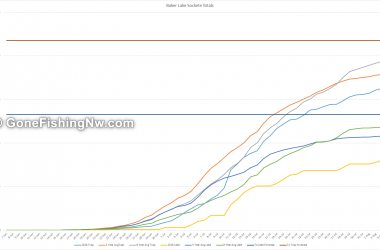Last year’s fishing at Baker Lake was disappointing to many. A smaller than forecasted return played a large role in that, made worse by the tribes netting based on pre-season forecasts resulted in not many fish being transfer to the lake last year. You can read more about the allocation and actual return and harvest in “Baker Lake By The Numbers.”
Fortunately this year things were significantly better – even though the return to the lake is still below the 5 year and 8 year averages.
I had the pleasure of spending a few days recently up at the lake fishing with friends and family for these fish.
The Baker Lake sockeye salmon make up for low numbers, relative to the Columbia sockeye run, by being strong fighters, and larger fish. Combined with the beatuty scenery makes this a fun and very popular fishery. One just has to go in not expecting limits to the boat in a couple hours like one can at places like Brewster pool.
I’ve covered how and where to catch these fish previously in “The Best Guide to Fish For Sockeye In Lakes” article. These are the same lures and techniques we used at Baker this year.
This year’s experience was quite interesting due to the weather. Some days were very sunny and hot, other days were cold and overcast. We caught fish in both exteremes but you need to adapt your approach. For example the dark overcast weather help keep the fish schooled together more, so finding the fish and staying on top of them is key, where the fish scatter more in the sunny weather and one needs to continually be on the move.
I bought a new fish finder this year – a Lowrance Hook2 7” Tripleshot – and this was a good opportunity to put it through its paces. With Lowrance’s C-Map Genesis (which used to be called Insight’s Genesis) I was able to download a high res underwater countor map from crowd sourced data – of which I’m proud to say I’m a contributor – of the lake. This really helps to skirt the edges of drop offs, or to avoid unexpected shallowing water.
There is always drift wood in the water at Baker Lake, so keep a good eye out for for this while up on plane. The wood will also bump into your downrigger line and fishing line. Keep a boat hook handy to push the wood away. For storage of your boat hook use some clips to secure it in a handy spot out of the way.
Baker Lake sockeye salmon is a very popular fishery so when you are fishing up there please be curteous to your fellow boaters and anglers. One boat almost hit me because they turned right towards me without looking where they were going. I also often see people who can’t seem to make up their mind which way they are going, preventing others from knowing what course to set to maintain distance. But my biggest pet peeve is behavior at boat launches. The boat ramp and the space immediately to either side is for people who are immediately launching or retrieving. The boat ramp is not the place to leave your kayak or canoe for the afternoon – that is unless you are trying to get it ran over by people backing up trailers. And right next to the boat launch is not the place to tie up your boat until tomorrow morning. Please be courteous and move your boat as far away from the ramp as possible, unless you are actually using the ramp.
While fishing we found that a speed of 0.8 – 1.0 MPH produced the most bites. For bait we used sand shrimp, cured coon shrimp and some grocery store shrimp that had been treated with Pro Cure Shrimp and Prawn Cure. Everything works, but this year I believe the Pro Cure stuff worked a bit better.
We paid attention to our finder and found schools of fish. We matched depth with our downriggers – which this year tended to be between 35 and 50 feet deep – and stayed in the school. Running the gear close to the downrigger balls lets you use a rudder flasher to help attract fish to your gear. It also enables you to make sharp turns without tangling your gear, and reduces the likely hood of other boats snagging your line.
If possible, keep your other lines in the water while fighting a fish. This is quite doable, especially with an experienced crew on board. As sockeye salmon are schooling fish it is very possible to get multiple fish on at the same time. On this trip we had 3 doubles and 1 triple, which is the sort of thing that helps put fish in the boat really quick.
Many people stop fishing around 10:30am at Baker, however if you push on your may be rewarded with more fish. We landed several fish in the afternoon. Fishing later can be quite enjoyable since sigificantly fewer boats are on the water. However the wind does tend to come up in the afternoon, so be prepared for rougher conditions and more effort to keep the boat pointed in the right direction. I find that a pair of drift socks – one on each side – near the front of the bow really helps in keeping the boat pointed in the right direction. As a bonus they also slow down the boat, if you are having trouble going slow enough.
I noticed several times other boats losing fish at the last second due to bad netting jobs. When this happens you hear the groans go up. The best way to net the fish is to use a long handled big bucket net, aim ahead of the fish, dip the net in the water and then scoop up towards the fish. Using a small or short handled net makes this tricky operation even harder. This picture shows a friend doing a textbook perfect dip and scoop on a fish.
Personally I don’t like my fish to be parboiled in 70 degree water before I take it home. So don’t put those nice fish on a stringer or in a dead well for the day. Instead bleed them out for about 10 or 15 minutes and then transfer them to a cooler filled with ice. This is also a great opportunity to take photos, instead of right after the fish is caught – when you should be getting lines back in the water quickly. I find that the new heavy duty coolers, like RTIC or Yeti, are well worth the price. The extra insulation and tightly fitting lid really prevent your ice from melting as fast – especially on those multi-day trips.
One thing that is alot of fun is if you have friends there in their boats is to each have a radio on boat so you can chat and share information.
My friends, family and I had a great time out there and can’t wait for next year. Tight Lines all!

